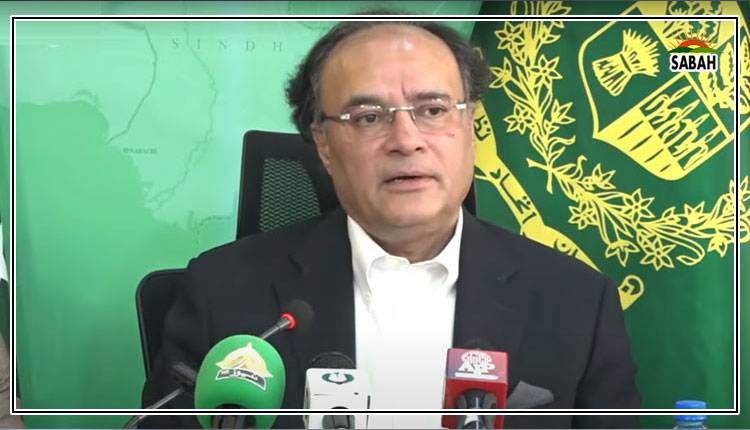Cost of climate inaction…Ali Tauqeer Sheikh
THE cost of climate change for Pakistan is very high. But the cost of inaction and growing procrastination is even higher. It is often made worse by the absence of coordination among and within federal ministries and between the latter and the provincial departments.
The absence of the provinces from strategic-level climate decision-making has further trapped the country in climate passivity. This cycle is vicious: the less we prepare our communities to brace for climate action, the more vulnerable our economy becomes. Some initial actions on the ground can help us build credibility, which is the weakest link in the chain.
The climate summit in the UAE next month will unleash the revision process of the Nationally Determined Contributions (NDCs) by all countries, including Pakistan. The revisions will be based on the recommendations of the global stocktake that will be presented at the summit.
This offers the present interim government an opportunity to initiate a national-level stocktake for a realistic assessment of where we stand in climate-proofing Pakistans development agenda. A national-level stocktake can be very timely and instructive.
To begin with, Pakistan has still not adopted a national agenda for climate-proofing its development priorities that are duly debated and approved by parliament and its committees, or the cabinet and its specialised arms such as the National Economic Council and the Executive Committee of the National Economic Council. Likewise, there are still no guidelines, timelines, or budgetary allocations for climate-proofing public-sector investments. This inaction has locked the future of millions of people in maladaptation, vulnerability, exclusion, and marginalisation.
As the Public Sector Development Programme is still not climate-proofed, Pakistan continues to use PC-1 performa that was first designed in the 1960s and casually revised in 2005. This does not help Pakistan generate essential data on expenditures on climate adaptation and mitigation, tag climate-related expenditures, or develop bankable projects. Not surprisingly, Pakistan does not successfully attract international climate finance, leverage private sector investments, or enable an ecosystem for public-private partnerships.
Pakistan has still not adopted a national agenda for climate-proofing its development priorities.
In many ways, the country is still struggling with the first generation of policy planning and strategy papers, without systematically assessing barriers to their implementation.
Pakistans first climate policy developed in 2012 had committed to a wish list of 735 actions, including 242 priority actions that were to be completed by 2015. The remaining short- and medium-term goals have mostly remained unattended, primarily because these were not ranked in priority, budgeted, or negotiated with the concerned line departments. Ironically, the revised edition of the climate policy in 2021 presented, yet again, another laundry list, only a longer one.
Pakistans NDC submitted in 2016 to the UNFCCC (climate change) secretariat, instead of aligning with the climate policy, went on a different tangent. As if this wasnt enough, a parallel structure was created by the Climate Change Act in 2017 to establish a climate change authority, a climate fund, and a (governing) council. It was expected they would replace the climate ministry. While the first two have still not been notified, the council last year held its first meeting. It appears that the tendency to strengthen the federal grip has persisted, despite the 18th Amendment. Provincial efforts to develop their respective climate policies were stunted, if not stifled.
The NDC revised in 2021 was also not fully aligned with national climate, water, agricultural and other sectoral national and provincial policies. Ironically, it fell short of building upon the findings of the Second National Communication submitted in the same year to the UNCFCCC on the countrys emissions levels.
The SNC showed that Pakistan has an alarming trend in greenhouse gas emissions, recording a 170 per cent increase from 1994 to 2018 and projected an unbelievable 230pc increase between 2018 and 2030. These estimates are based on fantastic projections of an economic growth rate of 7pc, a threshold never touched since the 1960s. The IMF is now estimating a growth rate of only 0.5pc for FY23. There is then a clear case for a downward reduction in the third national communication as well as the NDC.
, compared to 218.94 MtCO2e from energy industries, manufacturing, transportation, and other sources combined.
Reducing emissions from agriculture is hardly a central plank of Pakistans NDC or the National Adaptation Plan, approved in July this year. The data presented in SNC provides Pakistan a foundation for a science-based policy. It should inform the national stocktake of NDC revisions, as well as the development of national and provincial action plans for NAP implementation.
In the national stocktake, Pakistan will also need to reassess its high priority actions committed in the NDC. In the realm of mitigation, Pakistan has committed i) to meet 60pc of energy needs from renewable resources, ii) 30pc of new transportation fleets based on electric vehicles, and iii) impose a moratorium on new coal power plants and shelve two new coal-fired power plants in favour of hydroelectric power. The policy vicissitudes beg for clarity.
In the realm of adaptation, the NDC has committed that Pakistan will sequester 84 MtCO2e over the next 10 years by annually investing $800 million from national resources. Emissions reduction from the forestry programme awaits updating not only because the methodology adopted needs independent validation, but also because the programme has not continued with the same vim and vigour.
The national stocktake will only pave the way for a serious discourse on Pakistans biggest development challenge. It can serve as a precursor for Pakistans intent to reform and act for climate resilience. The global landscape of international climate finance is overly complex and, mostly out of reach for developing countries.
An earnest assessment on where we stand will help strengthen three domains: i) streamlining and reforming institutional make-up and competencies, ii) deepening understanding of how global climate finance has evolved and how it can be accessed, and iii) understanding how to de-risk climate finance investments to attract national and international capital. Above all, it will help enhance Pakistans credibility.
Courtesy Dawn












